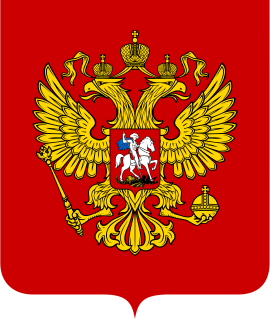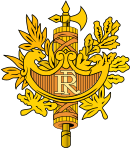
A four-part referendum was held in Russia on 25 April 1993. Voters were asked questions on confidence in President Boris Yeltsin, support for the government's socio-economic policies and early elections for both the presidency and parliament. The referendum was initiated by the Congress of People's Deputies, which stipulated that Yeltsin would need to obtain 50% of the electorate, rather than 50% of valid votes. However, the Constitutional Court ruled that the president required only a simple majority on two issues: confidence in him, and economic and social policy; though he would still need the support of more than half the electorate in order to call new parliamentary and presidential elections.

A constitutional referendum was held in France on 24 September 2000. The proposals would result in the mandate of the President being reduced from seven years to five years in line with terms in office in other European countries. It was approved by 73.2% of voters, although turnout was just 30.2%.

A referendum on the Matignon Accords on New Caledonia was held in France on 6 November 1988. The accords were approved by 80% of voters, although turnout was just 36.9%. In New Caledonia it was approved by 57% of voters.

A constitutional referendum was held in France on 21 October 1945. Voters were asked whether they approved of the Assembly elected on the same day serving as a Constituent Assembly, and whether until a new constitution was approved, the country would be governed according to a proposed set of laws that appeared on the ballot paper. If the first proposal had not been approved, the Third Republic would have been restored, but its approval led to the creation of the Fourth Republic. Both were approved by wide margins with a turnout of 79.8%.

A constitutional referendum was held in France on 5 May 1946. Voters were asked whether they approved of a new draft Constitution proposed by the Constituent Assembly elected in 1945.

A constitutional referendum was held in France on 13 October 1946. Voters were asked whether they approved of a new constitution proposed by the Constituent Assembly elected in June. Unlike the May referendum, which saw a previous constitutional proposal rejected, the new constitution was accepted by 53.2% of voters, and brought the French Fourth Republic into existence. Voter turnout was 67.6%.

A constitutional referendum was held in France on 28 September 1958. Voters were asked whether they approved of the adoption of a constitution for the French Fifth Republic written by Charles de Gaulle. It was overwhelmingly approved, with 82.6% in favour. Voter turnout was 84.9% in Metropolitan France and 79.8% overall.

A referendum to approve the Évian Accords ending the Algerian War and granting self-determination to Algeria was held in France on 8 April 1962. It was approved by 90.8% of voters with a 75.3% turnout.

A constitutional referendum was held in Poland on 25 May 1997. Voters were asked whether they approved of a new constitution. It was narrowly approved, with 53.5% voting in favour. Voter turnout was just 42.9%. Although the 1995 Referendum Act stated that a 50% turnout was required to validate the referendum, the Supreme Court ruled on 15 July that the constitution could be introduced.

A double referendum was held in Italy on 11 June 1978. Voters were asked whether they approved of the repealing of laws on political party financing and public order. Both proposals were rejected.
A referendum on a new constitution and citizenship was held in Estonia on 28 June 1992. Voters were asked whether they approved of the new constitution drawn up by the Constitutional Assembly and extending suffrage to people registered as citizens. The new constitution was approved by 91.9% of voters, whilst the suffrage extension was rejected by 53.5%. Voter turnout was 66.8% for the constitution question and 66.7% for the suffrage question.

A constitutional referendum was held in Italy on 7 October 2001. The amendment was proposed by the Silvio Berlusconi government. Voters were asked whether they approved of amending the constitution to give more powers to the regions on issues including agriculture, education, healthcare and taxation. The proposals were approved by 64.2% of voters.

A referendum on the electoral system was held in Slovenia on 8 December 1996. Voters were given three options to approve or not; a compensatory system, a two-round majority system and a proportional representation system at a national level. Due to the low turnout of 37.9%, none of the proposals crossed the legal threshold and the results were invalidated. However, in 1998 the results were revisited by the Constitutional Court, who found that the two round majority system had been approved.

A constitutional referendum was held in Lithuania on 10 November 1996 alongside the second round of the parliamentary elections. Voters were asked whether they approved of an amendment to Article 47 of the constitution to add a paragraph allowing EU citizens to buy agricultural land. Although it was approved by 52% of those voting, voter turnout was only 39.7% and the referendum failed to pass the threshold of 50% of registered voters in favour.

A constitutional referendum was held in Romania on 8 December 1991. The new constitution was approved by 79.1% of voters.

A constitutional referendum was held in Romania on 18 and 19 October 2003. The proposed amendments to the constitution were approved by 91.1% of voters.

A referendum on the electoral law was held in San Marino on 3 July 2005. Voters were asked four questions on changes to the electoral law and electoral system. Although all four were approved by a majority of those voting, voter turnout was just 21.7%, meaning that the quorum of 32% of registered voters (10,143) was not achieved for any question. This resulted in all four questions failing, including two that proposed raising the quorum to 40%.
Two referendums were held in Switzerland in 1887. The first was held on 15 May, asking voters whether they approved of a federal law on spirits, and was approved by 65.9% of voters. The second was held on 10 July, asking voters whether they approved of an amendment made to article 64 of the federal constitution, and was approved by 77.9% of voters and 20.5 cantons.
Five referendums were held in Switzerland in 1891. The first was held on 15 March on a federal law on federal officials who had become unemployable due to disability, and was rejected by 79.4% of voters. The second was held on 5 July on a constitutional amendment, and was approved by 60.3% of voters. Two referendums were held on 18 October, one on revising article 39 of the federal constitution and one on a federal law on Swiss tariffs; both were approved. The last was held on 6 December on the question of whether the federal government should purchase the Swiss central railway, but was rejected by 68.9% of voters.
Nine referendums were held in Switzerland in 1975. The first was held on 2 March on an amendment to the Swiss Federal Constitution on the article on the economic cycle. Although it was approved by a majority of voters, it did not receive the support of a majority of cantons, so was rejected. The next five were held on 8 June on protecting currency (approved), financing the national road network (approved), amending the general tariff (rejected), increasing taxes the following year (approved) and restricting federal expenditure (approved). The final three were held on 7 December on a constitutional amendment on the right to residence and welfare benefits (approved), a constitutional amendment on water management (approved) and a federal law on the import and export of agricultural goods (approved).











